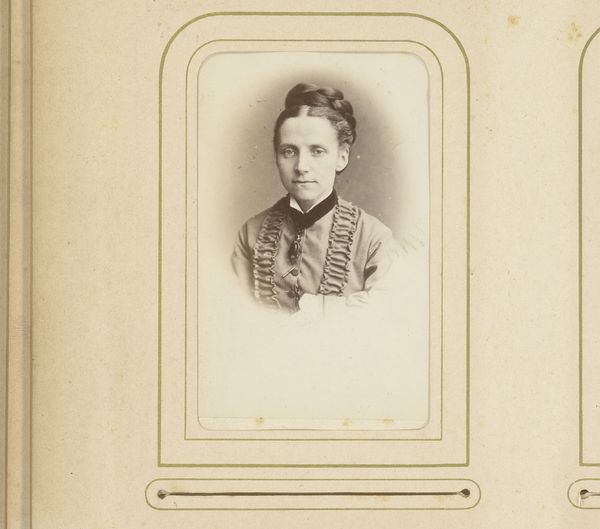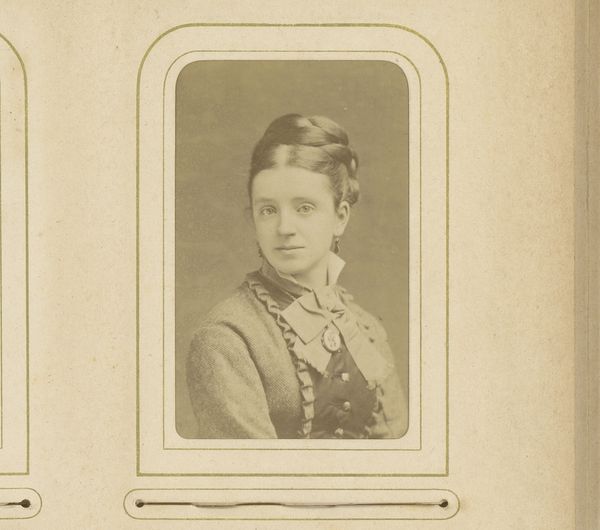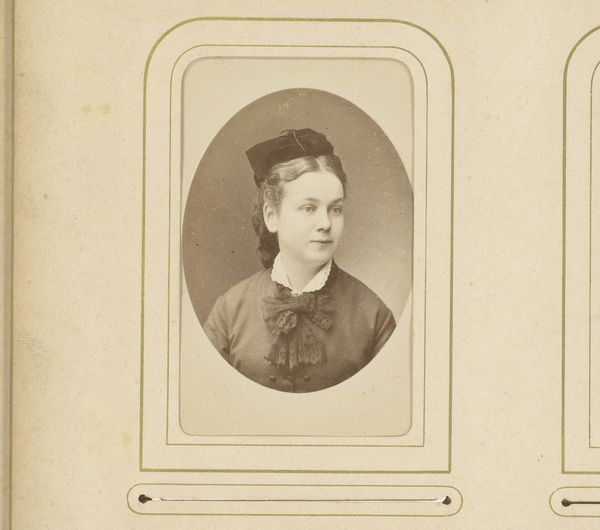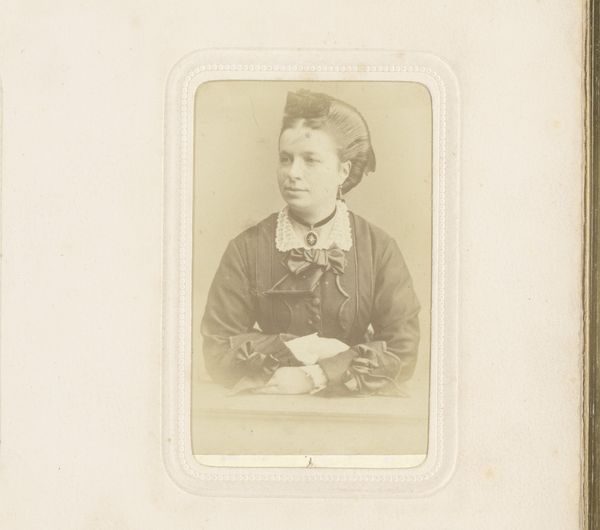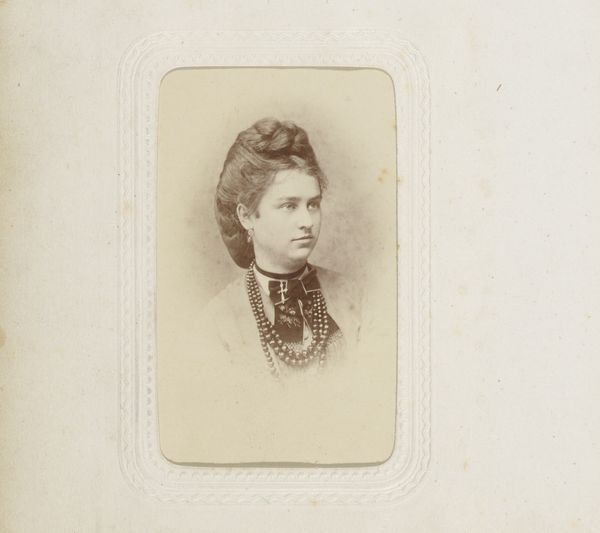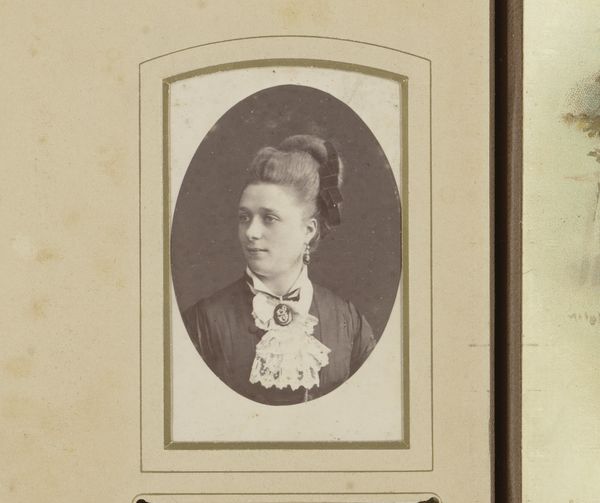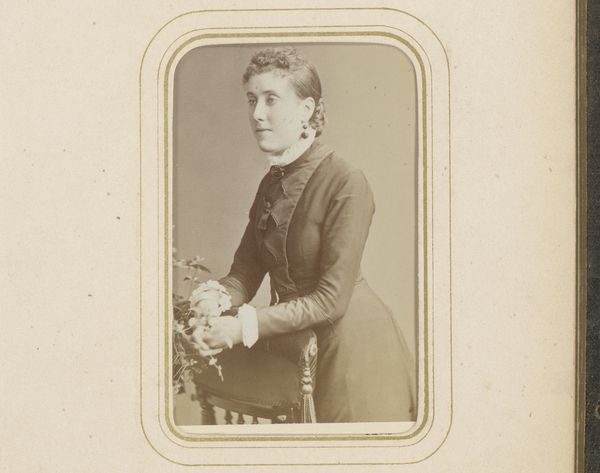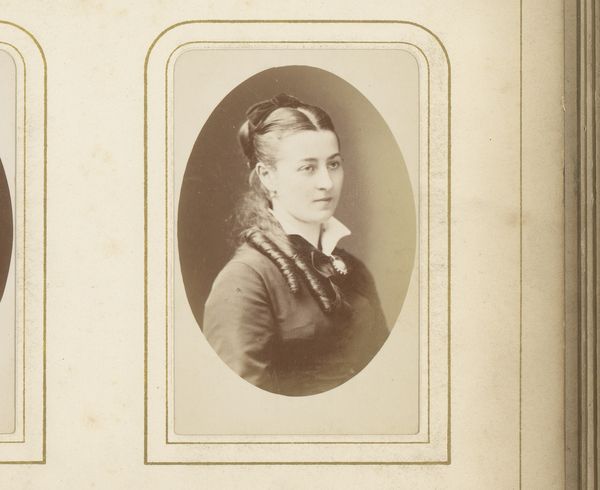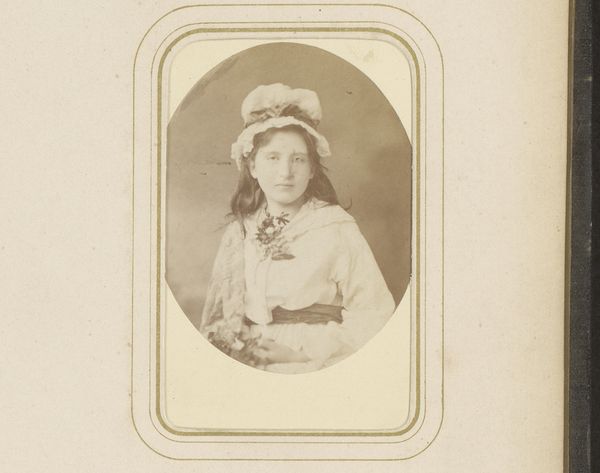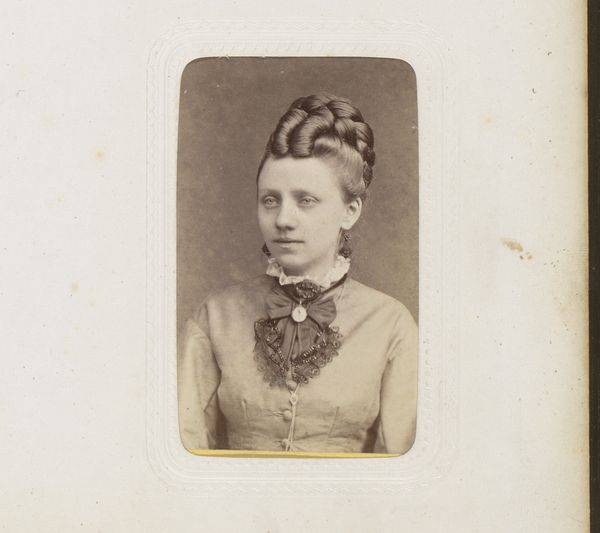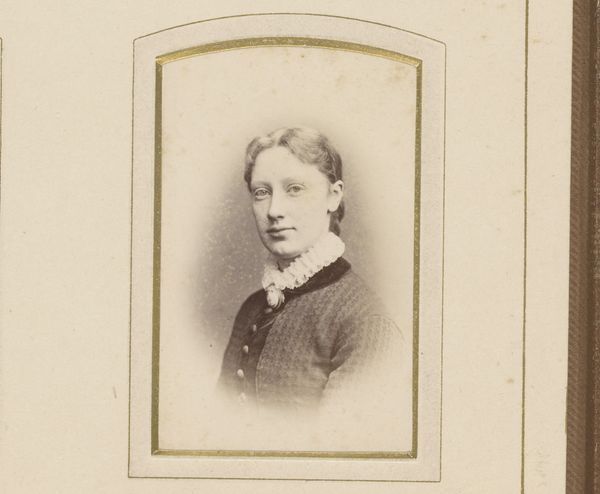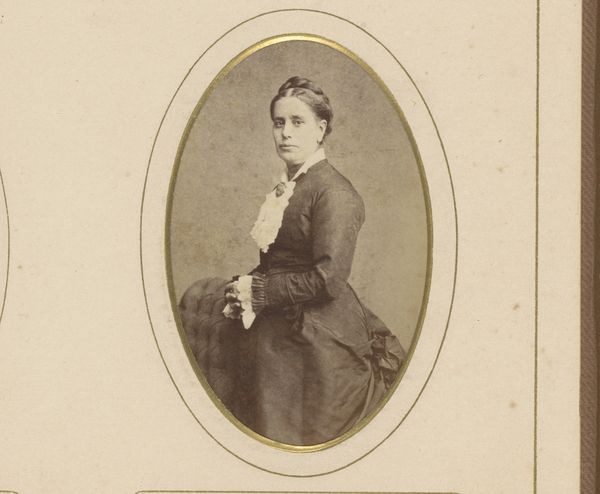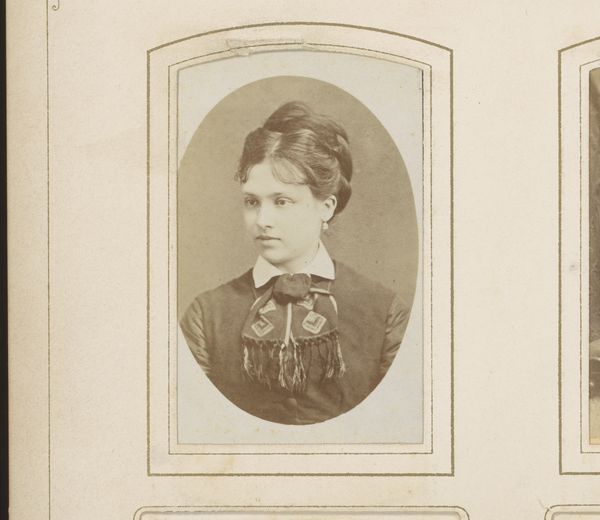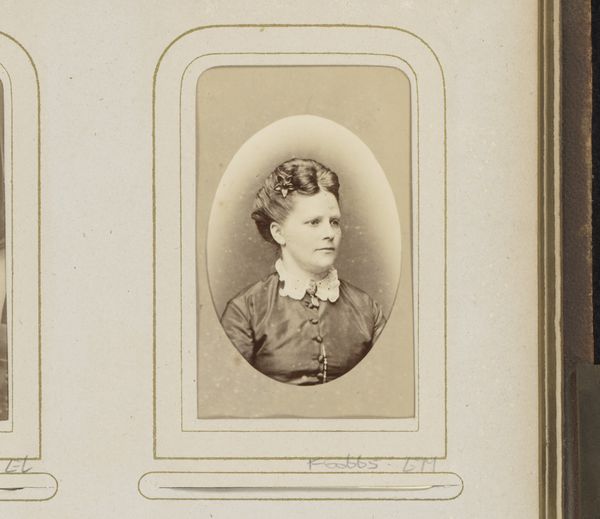
Dimensions: height 84 mm, width 53 mm
Copyright: Rijks Museum: Open Domain
Antonio Sorgato created this photographic portrait of a woman using the wet collodion process, a popular technique in the mid-19th century. This method involved coating a glass plate with light-sensitive chemicals, exposing it in a camera, and then developing it immediately. The resulting image, a glass negative, was then used to create positive prints on paper. Think about the time and skill involved in preparing the chemicals, coating the plates, and carefully controlling the exposure and development. Each photograph was a unique object, bearing the mark of the photographer's hand. The tonal range and clarity were remarkable for the time, capturing minute details of the sitter's clothing and jewelry. The wet collodion process was labor-intensive and required expertise, but it democratized image-making, making portraiture accessible to a wider segment of the population. Photography, like other forms of craft, blurs the lines between art and industry, inviting us to consider the social and economic forces that shape creative expression.
Comments
No comments
Be the first to comment and join the conversation on the ultimate creative platform.
